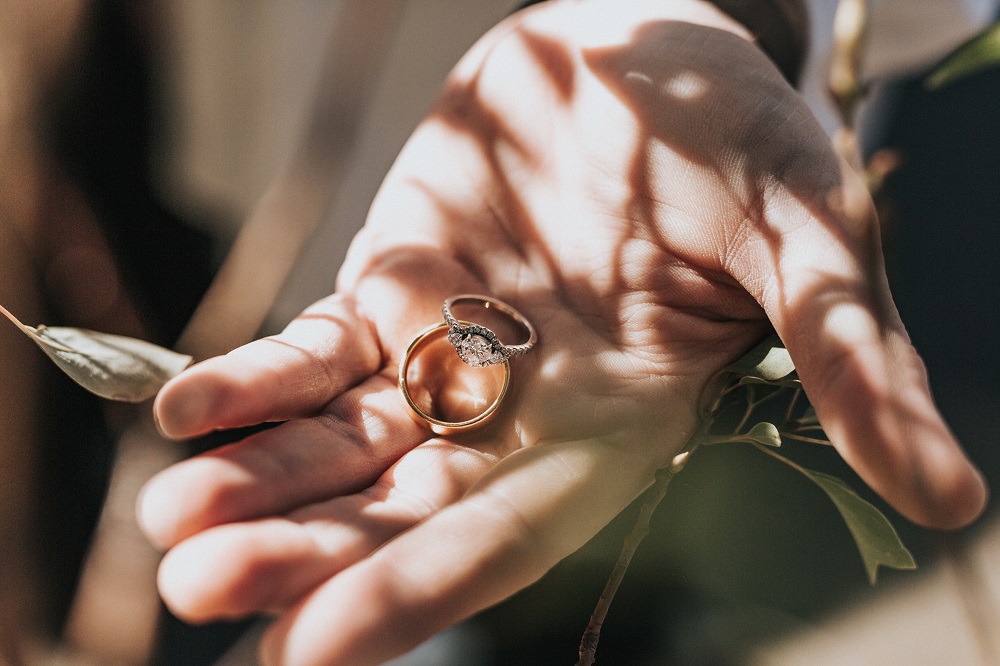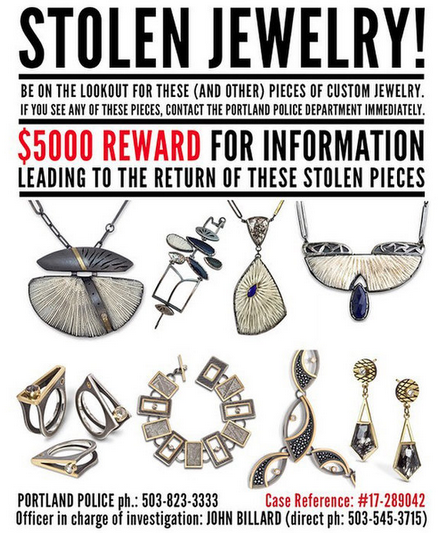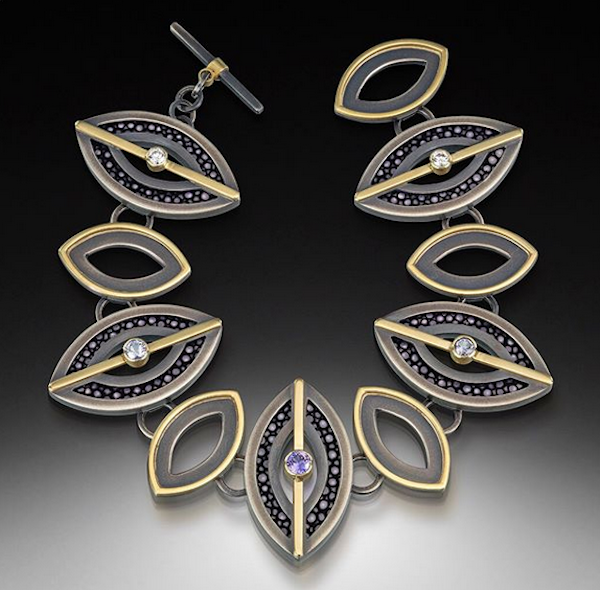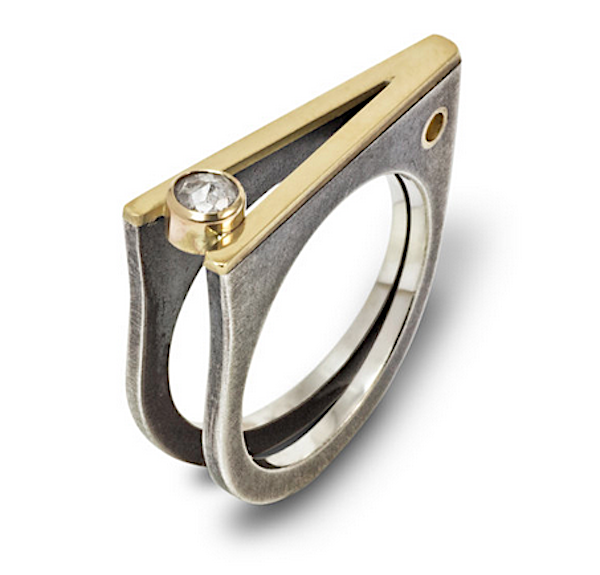How to avoid jewelry theft when you travel

How to avoid jewelry theft when you travel
Every jeweler’s worst nightmare comes true all too frequently.
Last September, while working at a jewellery exhibition in Portland, Oregon, Janine DeCresenzo and Megan Clark had their inventory taken from a rented car. Thieves stole $300,000 worth of handcrafted jewellery, the majority of which was one-of-a-kind. While closing down her stand at the Pasadena Craft Show the year prior, Marne Ryan’s handcrafted jewellery inventory was stolen.
When jewellers discuss this topic, all kinds of terrifying stories emerge. Theft occurs rapidly. It takes longer to recover from it.
“I’m just getting started on replacing my inventory.” Janine informed me six weeks after her robbery, “I don’t want to make the exact same items I lost.”

Here’s what happened. She and Megan went to a store after spending the day at the Art in the Pearl event, unaware that they were being followed. The crooks had less than seven minutes to clone the car’s electronic lock, empty the trunk of both artists’ belongings, and flee. The women got in the car and drove away, completely ignorant that their valuables had been stolen.
Janine’s distinctive designs use fragments of coral from a collection acquired along the beach by her late grandmother. The designs are dictated by the odd forms and textures of the coral, and while the coral itself isn’t worth much, the jewels and metal Janine employs – not to mention the hours spent in the workshop – are

This is also true for a large portion of Megan’s lost stuff. Her hallmark pieces include stingrays and are generally made with hand-textured mixed metals in unusual geometric shapes. The fact that both artists’ jewellery is so different makes it more difficult for thieves to sell it – which might work in their favour or against them.
Following the incident, detectives from as far as Los Angeles contacted out. One has been monitoring a Colombian gang that preys on jewellers for years. “It’s a good thing my work is unique,” Janine adds, “because if they attempt to sell it, I have a chance of getting some pieces back.” “However, she also stated that they will most likely melt it and utilise it for materials, which is more unpleasant.”

A few things they plan to do differently – and advise others to do if they’re traveling with jewelry:
Make plans for safe storage on the road. Consider renting a temporary security deposit box at a bank. When you’re booking a hotel, call ahead and ask if they have a security box or safe. It may be worth paying a little extra sometimes. Many artists compensate for the expense of travel and show fees with ultra-cheap accommodations. “We’ve all stayed in campers, cheap motels or Airbnb rentals that are very unsafe, not even thinking,” Janine says.
Enlist the help of security at jewelry shows. Megan and Janine have started asking show organizers to have the security guards introduce themselves. “That way, if we feel unsafe walking to our cars, we can get them to walk with us,” Janine says. “My plan is to shut my curtain after the show, put my work away in different places, and change into normal street clothes.”
She now carries her most valuable pieces on her person, enough to fit in an ordinary shoulder bag, but draws the line at lugging her entire inventory. “I think that would put me at personal risk,” she says.
Drive evasively after leaving a show. Safety guidelines issued by the Jewelers’ Security Alliance advise driving slowly when leaving a show or sales call, taking circuitous routes, U-turns, and paying attention to your surroundings. If you think someone is following, don’t hesitate to dial 911.
Janine and Megan were clearly followed. “I’m not used to looking around to see if anyone is following me. This is something I need to be more conscious of,” Janine says. “We made it easy for them because they saw us turning in and parked first. Then we parked near them, so they could easily clone my lock signal.”
Don’t leave jewelry unattended in your car. Most thefts happen from the trunks of cars, often while jewelers are having dinner after a show. This is the scenario Janine hears most often from jewelers who have been robbed. Take the time to get your jewelry in safekeeping after a day at a show. When loading or unloading inventory, pull as close as possible to a well-lit front entrance.
Use manual car locks rather than electronic ones whenever possible. Judging from video captures, the thieves used a device that cloned the sound of their lock. This allowed easy access to the trunk with no noise or visible damage. The entire process took five to seven minutes. Janine and Megan didn’t open their trunk and discover the missing jewels until they had driven to their friends’ house, allowing the thieves more than an hour to get away.
Look into jewelry insurance. Insuring jewelry inventory against theft from a car is not so easy. Megan had travelers insurance and was covered for some of her materials. Janine filed a claim with the travel insurance policy that kicked in when she charged the rental car on her American Express card. Unfortunately, the stolen goods were considered business property, not personal, and so were not covered.
What kind of insurance would cover such a catastrophe? Jewelers Mutual told Janine they wouldn’t cover her because she works from home, which is considered a risk. Another company said they would cover jewelry at her home studio but not for inventory stolen from a car. After much research she and Megan both ended up with a policy from The Hartford, which covers all pieces worth less than $500 and materials for anything over $500 – if they can show receipts.
If something like this happens, be prepared to present receipts for every item stolen. That means materials, not necessarily the jewelry itself. Janine and Megan now keep careful records of each piece they bring to shows, including cost of materials.
Use certified stones. Janine and Megan both had a few less identifiable pieces that would be easier to sell as is. Detectives asked if any of the diamonds were certified. Diamonds valuable enough to warrant GIA certification are sometimes sent to be re-certified. “That’s the only chance you’d have to get that stone back,” Janine says. “But most of my diamonds are rose-cut, not super fancy. Megan had nothing certified either.”
Don’t stash it all in one place. Jewelers I spoke to all seem to handle this a little differently. Some take all jewelry with them after a show. Some carry it on them instead of leaving it in a car. Others worry this puts them at personal risk. Some leave at least a few pieces in a locked crate in the booth, pulling the diamonds and covering the front of cases so a thief can’t sneak in undercover. If you take jewelry with you, you might want to forego the rolling luggage and use a shoulder bag that doesn’t mark you as a vendor.
Janine is looking into small, portable video surveillance equipment and tracking devices. “You can actually put a tracking device in a piece of jewelry and then monitor it. A microchip in your bag wouldn’t help because the first thing thieves do is get rid of your bag. But if it was inside a locket or set underneath a stone, the work could be tracked. It might buy you a little extra time.”



